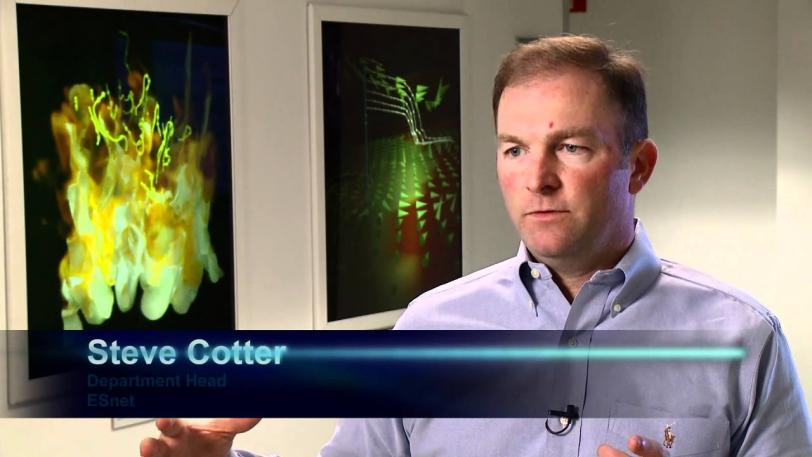SLAC's Sandy Merola Explains Energy Science Network's Importance on YouTube
Sandy Merola, SLAC’s Chief Operating Officer, has a prominent role in a short video celebrating the 25th anniversary of ESnet, the pioneering high-bandwidth computer network that now connects thousands of DOE researchers at more than 40 different national laboratories and supercomputing facilities and links them to research partners worldwide.
By Mike Ross
Sandy Merola, SLAC’s Chief Operating Officer, has a prominent role in a short video celebrating the 25th anniversary of ESnet, the pioneering high-bandwidth computer network that now connects thousands of DOE researchers at more than 40 different national laboratories and supercomputing facilities and links them to research partners worldwide.
Merola was central to developing ESnet during his 35-year career in information management and operations at Lawrence Berkeley National Laboratory, before he came to SLAC in 2008. He chaired the ESnet steering committee for seven years, until the network’s headquarters moved from Lawrence Livermore National Laboratory to Berkeley Lab in 1996.
The DOE created ESnet in 1986 to unify and enhance the data-sharing capabilities of three separate networks that DOE researchers in magnetic fusion, high-energy physics and energy research had created independently. What began in the early 1970s with 110-bits-per-second acoustic couplers is now the first 100-gigabit-per-second network devoted to science.
ESnet put science data “in the fast lane,” Merola said in the 7-minute, 34-second video. “The facilities … generate data once,” he explained in one of his seven interview segments. “You’ve got to capture it. You’ve got to ship it where it needs to be shipped. And you’d better not lose it.”
Berkeley Lab produced the video for the network’s 25th anniversary celebration, which was held November 14 at the SC11 supercomputing conference in Seattle. Several other SLAC facilities and employees also appear briefly in the video.
